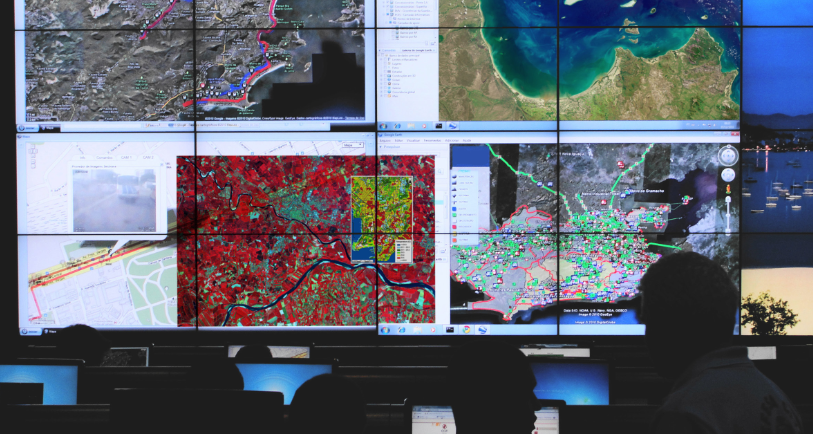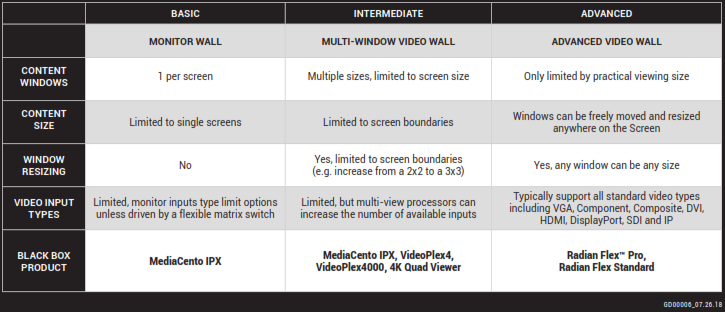
When considering an investment in a video wall, there are a number of important factors you need to keep in mind. In this guide, we’ll take a look at what constitutes a video wall, some of the technology behind video walls and five types of video walls used for different applications from basic to complex.
WHAT IS A VIDEO WALL?
A video wall is a multi-display wall that’s created by While video walls are typically large horizontal or | When considering what type of video wall meets your You also need to factor in how you may be using the |
FOUR VIDEO WALL
COMPONENTS TO CONSIDER
Displays When planning your video wall, consider what type of Video Wall Processors There are a number of types of video wall processors to First, today, the terms video wall processor and video |
Video Extenders Sometimes video wall processors can be located close Control System control for multi-input and multi-window video |
BASIC VIDEO WALL
Monitor Wall The monitor wall is the simplest form of video wall as it INTERMEDIATE VIDEO WALL Multi-window Wall | Multi-Viewer A multi-view processor is a video processor ADVANCED VIDEO WALL An advanced video wall is one that supports a large
|
Below is a summary of several features and | Expert Advice Choosing the right video wall processor can be a challenge. Before you make a decision, consult the experts at Black Box’s Center of Excellence for free advice and application engineering. We’ll work with you to find and configure the right video wall solution for your specific application. |

![]()
Need support, click here
